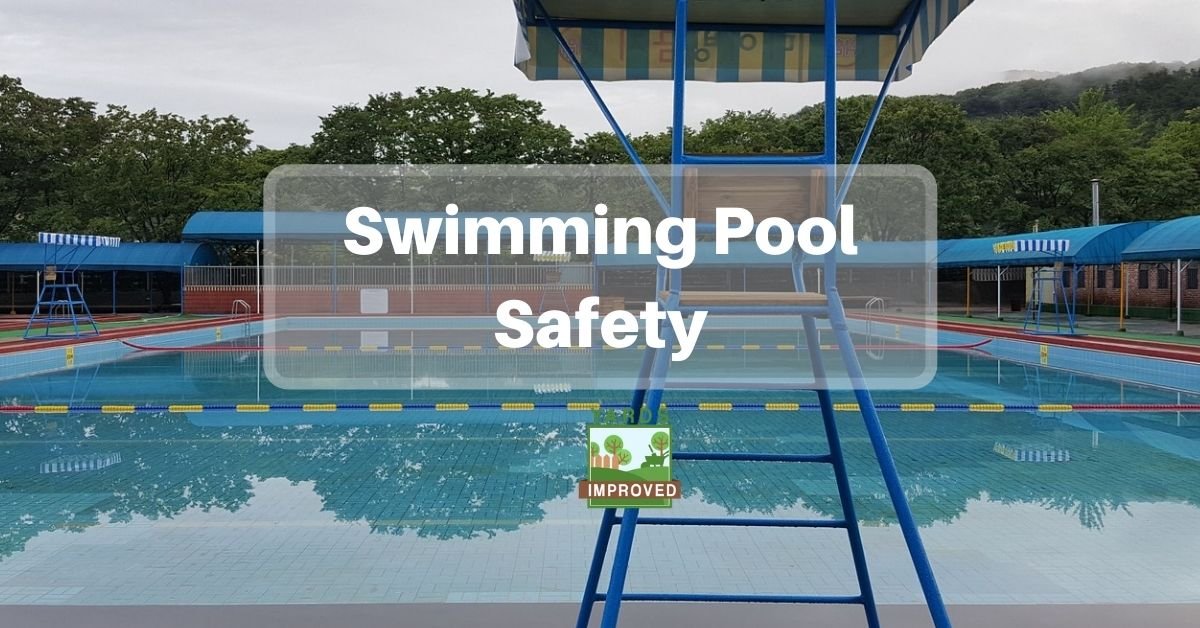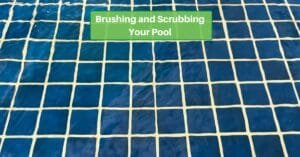Taking a dip in the pool on a hot summer day is an awesome way to relax. It’s refreshing and relaxing, whether it’s after a long day of work or after weekend chores. At the same time, it’s important to do so safely. While the pool is a fantastic place, there is still risk involved for adults and especially for young children. Observing some basic precautions will you and the whole family to enjoy the pool even more.
Design Your Pool Area For Safety
The first step to pool safety is to set up the area around it to minimize risk. Be sure to take steps to minimize the risk of unauthorized access, slips and falls, broken glass, and other hazards.
Every pool should have a safety fence around it to keep children from trying to swim unsupervised. The gate in this fence should be kept locked, of course. Local zoning regulations may dictate that the fence measure a certain height. If not, we recommend a minimum of a four-foot high fence (48 inches). But higher is good as well!
In some jurisdictions, it’s also required that gates be self-closing and open away from the pool. This helps make it harder to forget to secure the area. Gates that open out prevent anyone on the other side from getting bumped into the pool.
For the sake of liability, you may also want to add “No Trespassing” signs. While it may be obvious that your pool is on private property, it’s good to have backup in case of any incidents where uninvited guests try to enjoy your pool.
It’s also good to mark the depth of the pool. If the entire pool is a uniform depth, it is still good to mark it at intervals. If it varies in depth, mark it in large block letters where the depth drops by six inches. You might also want to add a safety divider to divide the shallow end from the deep end.
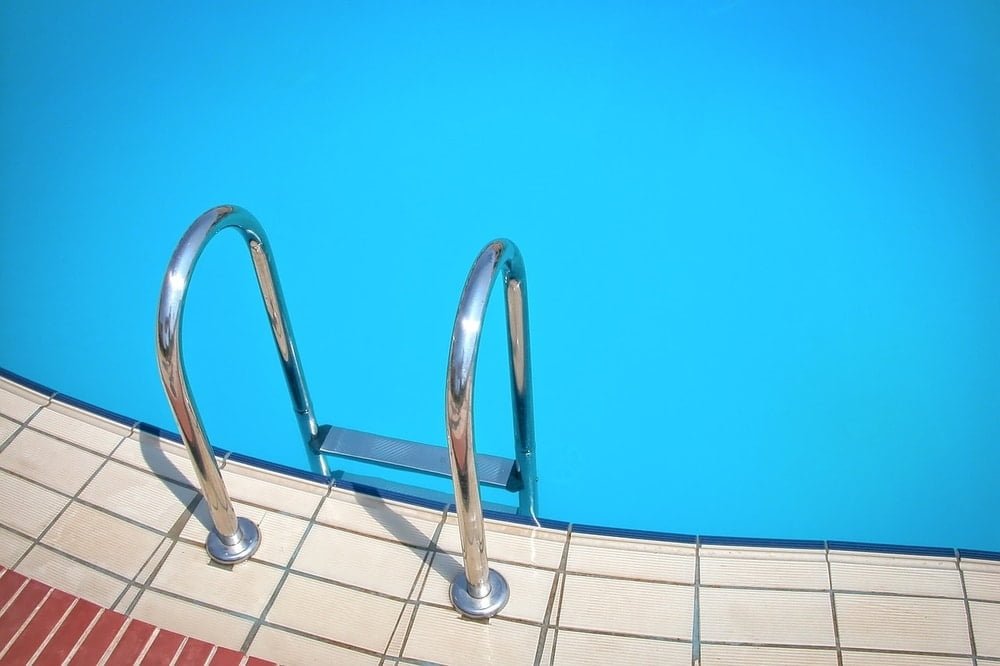
Make sure that railings around the pool as well as ladders don’t have any sharp edges and remain stable over time. This is something to be aware of on an ongoing basis to help avoid scratches and cuts.
The pool deck is another important area of concern. The surface should be slip-resistant even when wet. There are many materials that work well for a deck. Whatever you choose, it needs to have a surface that will not be slippery when wet. That can be a property of the material itself or come from special paint or sealant applied to it.
Finally, you should consider a pool alarm. These systems sound an alarm in your house or on your phone when someone enters the pool. It’s a great way to make sure your children and pets don’t fall in while you’re distracted. They’re easy to install and reasonably priced.
Good Swimming Habits for All
Even more important than all of the elements that go into building a pool is the development of good swimming habits. Many are common sense, but of course, we all fail in that area at times.
But first, let’s mention a huge myth about swimming. Contrary to what we may have heard our whole lives, it’s not necessary to wait a half-hour after eating to swim. The theory behind this was that the blood we need for digestion would pull too much blood from our arms and legs and we’d be unable to swim. However, science has found that it’s not true.
However, don’t drink alcoholic beverages before swimming, and definitely avoid drugs. It may be tempting to enhance the relaxation. But alcohol and drugs contribute to a substantial percentage of swimming deaths each year. They impair both physical and mental response, making drowning more likely.
It’s also not a good idea to swim alone. Even an accomplished swimmer runs the risk of cramps, exhaustion, or a fall on a wet surface. It’s always good to have a companion at the pool with you.
At the same time, interact with your swimming companions safely around the pool. Refrain from horseplay. it’s easy to slip and fall, banging your head or knocking someone into the water who doesn’t know how to swim. Always respect anyone who says they don’t want to swim or don’t know how. Don’t force anyone into the water.
Clean water is also important for safety. Learn how to test your pool’s water.
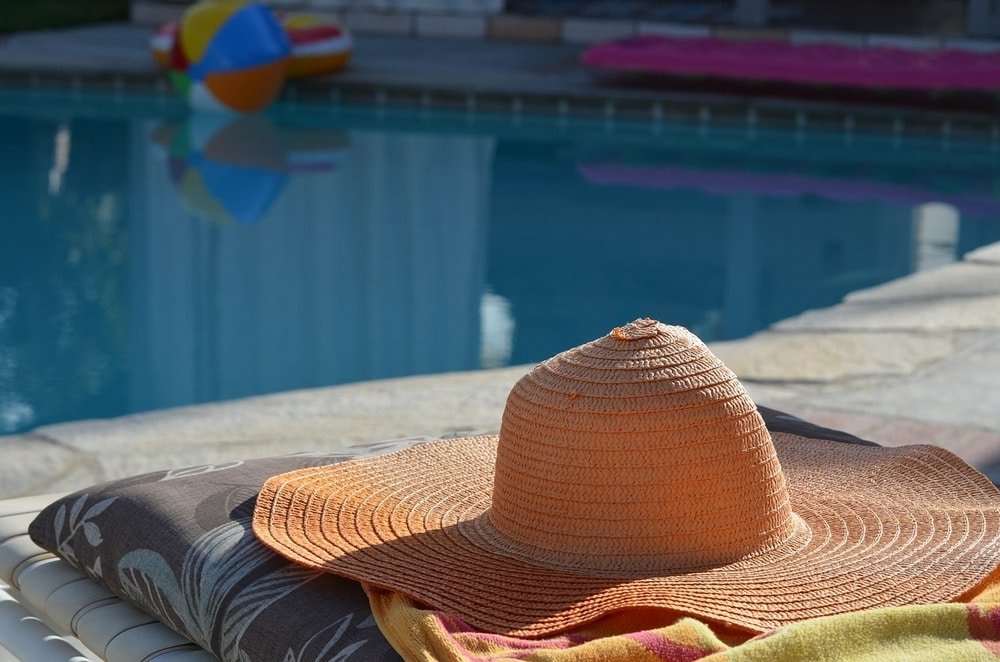
Diving into the pool – even if it’s from the deck – can also be dangerous, especially if the water is not deep enough. For a head-first dive from the deck, you should be sure the water is at least nine feet deep. Never dive into the shallow end and don’t take a running dive. You’ll usually end up deeper than you expected. The force of your dive could easily lead you to bang your head on the floor of the pool if the water is too shallow.
Of course, you need to make sure that electrical lines and equipment are a suitable distance from the pool. Lights, sound equipment, and other devices can create a risk of electrocution if they get wet. Water conducts electricity. Be sure that extension cords and other wires don’t run through areas where they’ll end up in a puddle.
Knowing CPR and having a first-aid kit on hand are other important steps to keep your pool area safe. And don’t forget to use a sunblock to protect your skin!
For more tips on things to avoid around the pool, check out this guide.
Pool Safety for Children
Taking care of children around the pool is especially important. They are at high risk of drowning if left unattended. Even if they already have had swimming lessons, they should never be left alone near the water. They are more likely to fatigue quickly and not have the strength to get out of the water.
Supervision means you need to be present at the pool with a child and paying attention to them. It’s easy for any of us to get lost in our phones or a book and not realize that a child is struggling in the water. Oftentimes, someone who is having difficulty in the water is unable to call for help. It’s necessary to be observant at all times.
Of course, that also means to be sure children cannot access the pool without proper supervision. We’ve already talked about the importance of a fence around the pool. If you have an above-ground pool, also make sure the ladder is stowed in such a way that children cannot climb in. It’s not enough to tell them to stay away; be sure to take steps to deny them access. Also, remember that children are incredibly creative. It might not be enough to simply fold the ladder up or remove it from the side of the pool. Don’t forget that they could also climb on other objects that they drag over. Block the “entry” opening of the railing as far as possible.
It’s also important to make sure young children use appropriate flotation devices. Whether these are swim vests or armbands, make sure they are sized correctly so the child cannot slip out of them. If you use a raft-type float with younger children, be sure they cannot slip through and stay with them at all times.
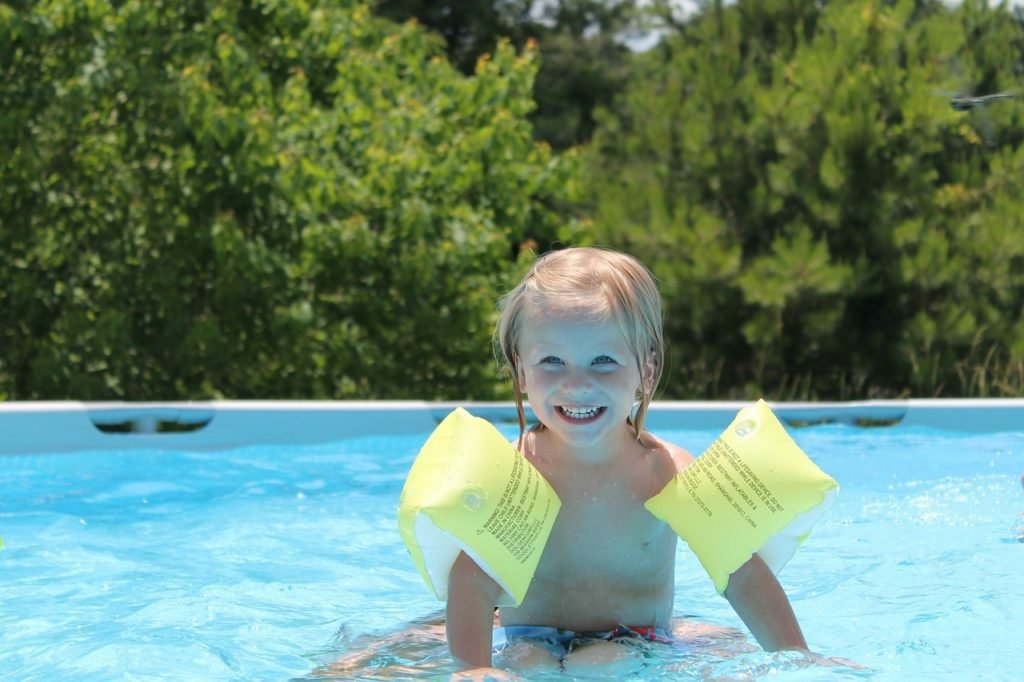
Remember that young children are also more susceptible to overheating and sunburn. Use lotion as well as hats to protect their skin. And don’t keep them out in the sun too long.
The most important steps for children’s pool safety, though, is to teach them early to swim, float, and behave around the pool. Getting them accustomed to the water will help them be more comfortable and safer. Swimming lessons are important for them to learn what to do and not do. First aid and CPR training are also good features to look for in a swim training program.
Conclusion
We hope you enjoy your pool safely for as many months a year as the weather permits! A pool is great for young and old. While it does present some risks, knowing how to behave around the pool helps to minimize them. Use your head and take the necessary steps to help make it a summer without negative incidents!

